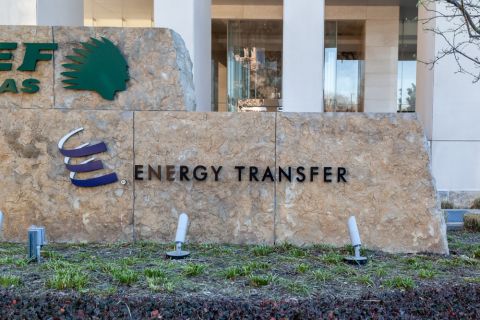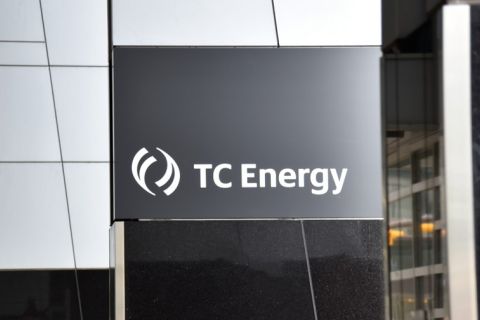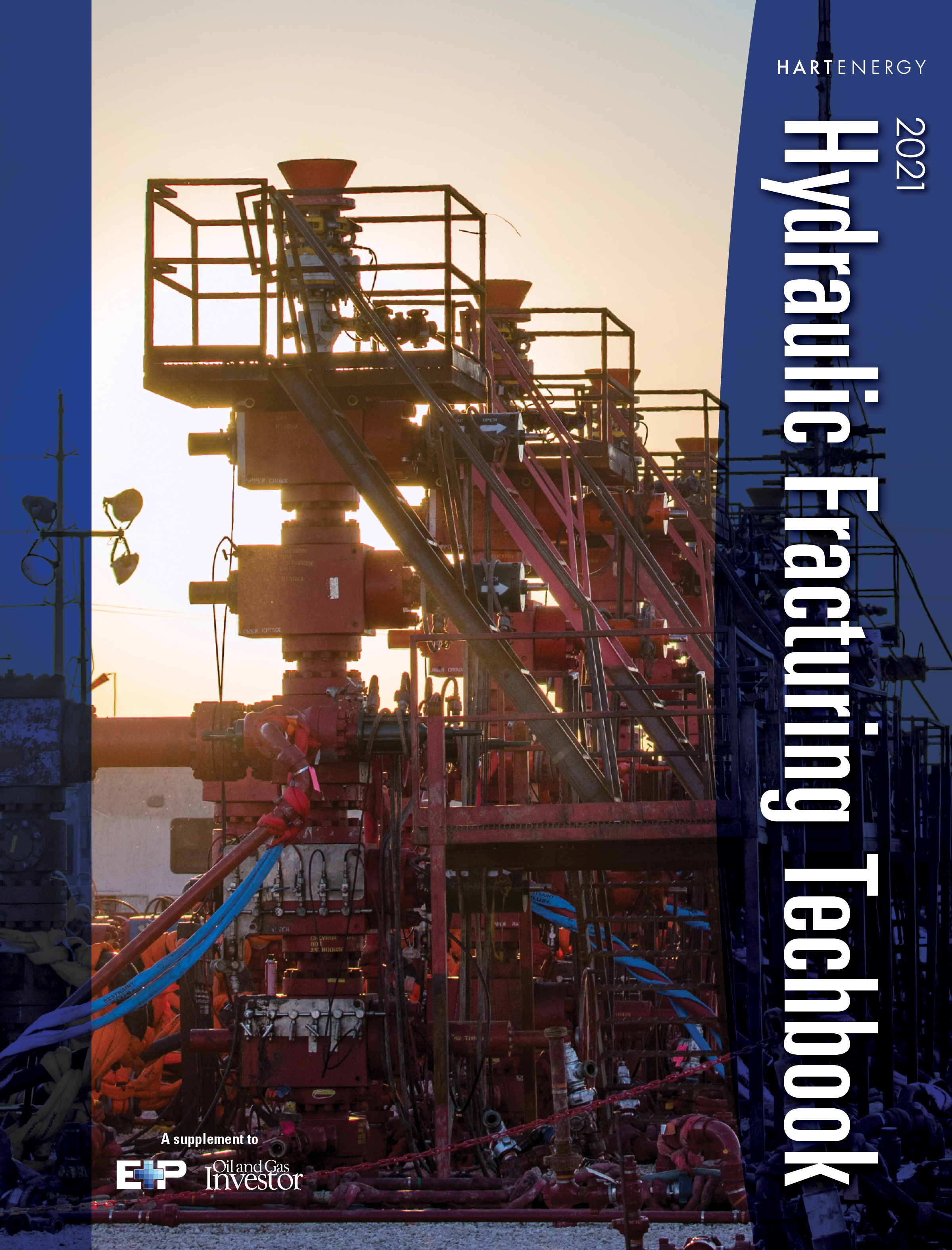
Editor's note: This article first appeared in the 2021 Hydraulic Fracturing Techbook. View the full PDF of this techbook here.
For much of the past decade, small, medium and large operators across North America have fine-tuned their hydraulic fracturing operations to develop more and more hydrocarbons while working to improve their efficiencies and, thus, their economics.
Unconventional development has undergone constant and consistent evolution since its emergence, peaking with the Shale Boom and cratering with the price collapse and demand destruction last year. Now operators are in a cash-first mindset, having moved on from production growth at all costs. These trends are occurring during a time when ESG efforts have taken priority. Indeed, this is not the shale industry of old, or not even of recency.
Hart Energy was joined by leaders of four major shale operators who shared their thoughts on the latest completion designs, what their operational plans are for the basins in which they operate and how recent acquisitions by each have enabled greater efficiencies and improved operations.
For this exclusive roundtable discussion, Hart Energy spoke with Gerry Torres, vice president of Permian completions with Pioneer Natural Resources; Rich Downey, vice president of drilling and completions with Devon Energy; Jeff Gustavson, vice president of the Midcontinent Business Unit with Chevron; and Eric Davis, global completions chief with ConocoPhillips.
Hart Energy: What are your development plans over the next year or so for your North American unconventional operations?
Torres: We’re going to average between 22 and 24 rigs in the Permian Basin this year, with an average of one rig in the Delaware. Our frac fleet counts can average between seven and nine frac crews in 2021. Now, with the acquisition of Double Point, we currently are at 26 drilling rigs and nine frac fleets. But if we moderate the Double Point growth, we expect to be in the rig and in fleet count that I talked about in the ranges of 22 to 24 and nine to seven frac fleets. We expect to place anywhere between 470 wells to 510 wells on production, with an average of four wells per pad and somewhere in the lateral length of just greater than 10,000 feet. We plan to grow 5% annually. So we’re still working the numbers as we moderate the Double Point activity, but we expect roughly zero to 5% growth in terms of barrels of oil.
Downey: We have been adamant that our goal is to stay very disciplined in the market today. We’re currently averaging nearly 290,000 barrels a day, and our goal is to maintain the level of capital required to keep production volumes consistent. This year our spend is about $1.9 billion, which will be spread throughout the different basins, but most of our capex will be spent in the Delaware Basin within the Permian.
Companywide we have 16 rigs operating: 13 in the Delaware, two in the Stack and one in the Williston.
In the Delaware, we’ve got five rigs in the North (New Mexico) and eight in the South (Texas). North and South Delaware came together as a result of our merger with WPX in January this year. The WPX legacy acreage is south of the state line, including the Monument Draw area, and the Devon legacy acreage is in the North Delaware into New Mexico. The really great thing about the merger, and this just doesn’t happen very often, is that we’ve taken the activity plans of the two individual companies and pulled them together without reducing activity levels. Now, with more than 400,000 acres across the Delaware Basin, we’re seeing a lot of savings due to operational synergies that have occurred due to the merger.
We have two rigs running in the Stack in Oklahoma and just picked up a frac fleet in early June.
In the North, we’ve got the Powder River in Wyoming and the Williston in North Dakota. We completed wells earlier in the year and recently picked up a rig in the Powder Basin. We also have a rig coming back to Williston at the beginning of 2022.
And then we have the Eagle Ford, which is a 50:50 joint venture with BPX. BPX does the drilling and completion, and we handle the production of all the activity there.
Gustavson: Over the last year, our strategy shifted to one of maintaining existing production and focusing on the highest returns while preserving longer-term value. We cut our capital in the Permian to provide the capital flexibility needed to respond to the market conditions. In the near term, we’re focused on maintaining that capital discipline. We are currently operating five rigs and two completion crews with a similar net rig count on the non-operated side. We have a strong position and growing free cash flow. In terms of getting back to the 1 MMboe/d trajectory, we intend to continue investing in the Permian, but we’re going to do it at the right time. The resources remain, but we have a lot of flexibility and will build that activity level back up when it makes sense.
Hart Energy: Can you explain your well economics and how you find those economics favorable for development?
Torres: Pioneer has over a million net acres in the heart of the Permian Basin, and it’s one of the world’s most economic shale plays. Our continuous acreage and top tier acreage, coupled with our highly efficient operations, allow Pioneer to have one of the lowest industry breakeven costs somewhere in the high $20 per barrel.
Downey: From a drilling and completion perspective, we focus more on the well costs and efficiencies of the operations, but of course it all comes back to the rate of return and net present value of the development. By bringing WPX and Devon together, two companies that were extremely successful in terms of well cost and production performance separately, we are seeing a lot of synergies from best practices. Both companies had done a lot of technical work to understand well spacing and communication between wells, and now that we’ve come together, we continue to see improvements.
Our frac design and casing design vary depending on our location, and for good reason, we mixed up legacy management and engineering teams to identify the best practices and opportunities.
Gustavson: Chevron’s Midcontinent Business Unit has a very large and attractive portfolio of acreage and development opportunities, with over 75% in low or no royalty acreage. We are focused on developing areas with the most competitive unit costs.
Hart Energy: How is your company implementing some of its ESG/carbon reduction goals into its hydraulic fracturing operations, and what have been the results of those efforts?
Torres: Pioneer is focused on ESG improvement and carbon reduction in all facets of its operations, but within completions, in addition to the carbon reduction efforts, a highly efficient operation, and reducing idle times, we have conducted a bottoms-up evaluation of all the next-gen frac fleet technology on the market. And we’ve actually trialed some of these technologies to get a better understanding on the impact on the overall carbon footprint. We will continue to evaluate these new technologies related to electrification, dual-fuel and alternative power generation for these frac fleets, along with the ancillary fracking equipment.
Downey: Operationally, we are focused on reducing the carbon footprint from both the completions and drilling sides. Diesel-based frac equipment is being replaced by dual-fuel and electric-driven equipment. Currently we are upgrading our fleets to Tier 4 dual-fuel equipment, which has greater than 70% gas substitution rates.
On the drilling side, we have transitioned to running our rigs off the electric grid. In addition to reducing carbon emissions by not using diesel generators, the electric-driven rigs are substantially quieter and so improve our ability to communicate on site, which helps improve overall safety.
Additionally, we are using recycled water every - where that we can, especially in the Delaware Basin where we aim to use 90% non-freshwater. By having so much acreage in the Delaware, we can build out the infrastructure to support the use of recycled water while also reducing water disposal costs.
Gustavson: We started introducing Tier 4 DGB [dynamic gas blending] frac fleets, consisting of 18 to 24 pumps, in Q1 of 2020. Currently we have two frac fleets running that are primarily Tier 4 DGB pumps. We plan on future fleets having this same technology. We have been able to reduce diesel usage over 40% per well and have reduced CO2 emissions over 15% compared to using straight diesel. We are also looking at e-frac technology, working with our business partners on the right solution.
Davis: We are implementing different systems to reduce emissions in our frac operations and have been for many years. This isn’t anything new for us. We first applied dual-fuel technology in both the Bakken and in Canada upward of 10 years ago. The technology was used as natural gas, and diesel prices fluctuated and fleets were available. Over the years, the focus has been primarily on natural gas/dual-fuel power generation and pumping systems and, more recently, Tier IV diesel fleets.
Now the market has shifted again, and we are trying to focus specifically on emissions as much as possible when fleets are available, but there isn’t enough new equipment to cost effectively meet the demand. We have efforts ongoing applying dual-fuel fleets as well as proposals for fully electric fleets. We try to use them when they make sense, when they’re available and as much as we can. Additionally, we have $80 million budgeted in 2021 that teams can apply for and spend on projects that are specifically focused on ESG to help defray the costs.
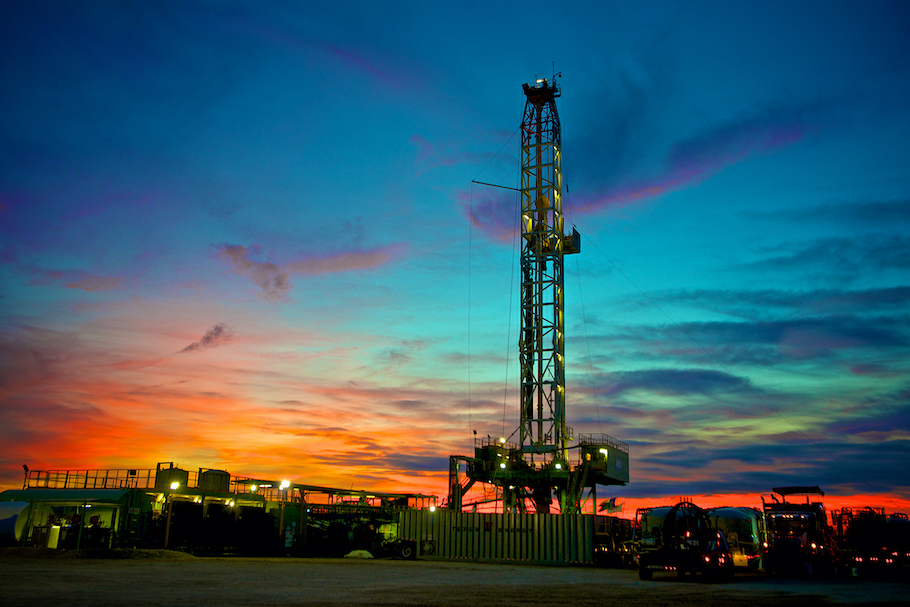
Hart Energy: What can you tell us about your completion designs, such as lateral lengths, sand/proppant loading, stage spacing, etc.?
Torres: With 1 million net acres, we have different development strategies, so we do have quite a bit different designs, but in general, our completion designs are approximately 50 barrels per foot and roughly 1,800 to 2,000 pounds per foot of in-basin proppant. And as far as our stage lengths, we optimize both for performance and cost.
Downey: We’ve talked about sealed wellbore pressure monitoring, a technology patented by Devon before the merger, and since we’ve come together, it has been applied in the Delaware South and the Williston, which had previously been legacy WPX positions. That technology is helping us understand frac placement, communication/interference between wells and well spacing.
We’ve also performed a lot of fiber monitoring, both permanent and dip in, which has really helped us understand the clustering and the placement of the frac job.
Devon had experience drilling three-mile laterals in Delaware North while WPX had experience drilling three-mile laterals in Williston. The experience and knowledge brought together has accelerated the implementation of three-mile laterals in additional areas and is another example of how we’re learning from each other and getting better as one team.
Gustavson: Our completions designs continue to advance as we leverage learnings and advanced technologies, ultimately delivering on both our higher returns and lower carbon targets.
Davis: We’re not that different from other operators in the sense that over time our well spacing, stacking, lateral lengths, cluster spacing and stimulation intensity have gotten more aggressive.
In many of our fields, lateral lengths are dictated as much by the leases as it is what we want to do from a development standpoint. For example, in our Eagle Ford play, our average lateral length is about 7,500 feet, but that’s because we have some leases that allow us to drill 10,000-foot laterals to 11,000-foot laterals. Other leases only allow us to drill 5,000- to 6,000-foot laterals. So, depending on how many leases we’re drilling that allow 10,000 to 11,000 versus 5,000 to 6,000 [feet], it moves that average yearly lateral length in the Eagle Ford up and down over time. If we happen to be in an area where we are drilling up 5,000-, 6,000-foot leases, then our numbers look like they’re going down, but it’s actually just a result of where we invest.
And it’s similar in the Permian, except we do have some leases where we could drill upward of 15,000 feet. There, it’s a mix between some 10,000- and some 5,000- and some 12,000-foot laterals.
The two places where we actually are more consistent is in our Bakken and in our Montney plays, where we average 10,000 feet and 7,500 feet. We have shown over the years that the longer the lateral, the lower our cost of supply and development efficiency is better. So we try to maximize length wherever we can.
On stage spacing and frac intensity, like the rest of the industry, we’ve seen a slight pullback over the last year and a half. For many years ConocoPhillips, like the whole industry, has been trying to get tighter and tighter in terms of spacing, tighter on cluster spacing and more clusters per stage. And now, like the rest of the industry, we have pulled back a little bit.
Instead of being in the 3,000 to 3,500 pounds per foot [of proppant] range, we’re now getting more in line across the board around 2,500 pounds per foot. That’s kind of a general average of our Big Four plays.
Individual fields can be above or below that. Similarly, we’ve pulled back on cluster spacing where we’ve been as low as a couple feet spacing in some fields, but now have moved back up to 7-30-foot spacing in other fields. We don’t feel like there’s one answer that fits all because the permeabilities in each one of these unconventional plays are different. That dictates different well spacing and cluster spacing based on the permeability. As the permeability gets higher, then the wider the spacing can be.
Hart Energy: Has your company implemented simul-fracs into its operations? If so, what has been the result?
Torres: We’ve been very happy. We’ve seen encouraging results. In our simul-frac trial, we completed four pads in Q1. We’ll continue to trial simul-fracs throughout the rest of 2021. And as a matter of fact, we’re currently evaluating the operational and logistical components for a more comprehensive simul-frac deployment for the future. That allows us to stimulate two wellbores and wireline two wellbores at the same time—so really four operations at the same time. By doing that it reduces our completion days, and it also helps with our overall cost of completing these wells. We expect those costs to be reduced as well.
Downey: We’ve evaluated simul-fracs but have not implemented the technique at this time as we have gained more efficiencies by the way we place our frac jobs. Everything we’re doing with multi-well pads, we really haven’t seen the value there yet with simul-fracs.
With monoline being utilized throughout our operations, the frac efficiency of switching wells between stages has been greatly improved. This monoline is working fantastic for us. With the utilization of monoline, shutdown time between frac stages is minimized and we’re back to fracking typically in less than 15 minutes.
Gustavson: Yes, all our fracs are planned to be stimulated using simul-frac. We have been able to treat two wells simultaneously at a lower rate, which corresponds to lower frictional pressure ultimately allowing us to use less friction reduction chemicals. Additionally, in areas that have a high-fracture gradient prior to simul-frac, we had to use 15K pressure control equipment (which costs more) during the stimulation. By adopting simul-frac, we have been able to stimulate wells in these areas using 10K pressure control equipment. Overall, we have been able to realize an average of 8% reduction in well costs and a 30% cycle time improvement.
Our wells can also be drilled with a smaller casing design since there is less friction pressure in the system due to simul-frac rates being lower than traditional frac pumping rates. Our business partner also benefits from the lower treating pressures seen with simul-frac since they do not have to replace valves/seats in the fluid ends as often as they would with higher treating pressures.
Davis: Yes, absolutely. We began systematically implementing in 2020 where it makes sense and where it is physically possible. We have deployed on new multipads and a few times on infill pads with multiple wells. However, we don’t deploy everywhere. When you infill and/or you have a single well, then you can’t twin-frac or simulfrac. So utilization of the technique depends on what our development focus is at the time and which areas within our portfolio we are concentrating investment. In 2021, 35% of our wells will use the twin frac technique. From a performance standpoint, on average, we’re realizing savings of about $200,000 per well and seeing cycle time improvements of 40%, which means we’re getting our wells online one to two weeks earlier depending on the lateral length. We expect our use of this technology to increase in 2022. Those stats are driven by the fact that we went from pumping on the order of 15 to 16 hours per day with single zipper ops to the low 20s hours per day with twin-frac. When you can pump that much more per day or in that many more wells in time, it has a significant effect on all your overall cost structure.
Hart Energy: What role does natural gas play in your development plans now and in the future, particularly considering the growing role gas is likely to play in the near and long term?
Torres: Pioneer’s asset base in the Permian is predominantly oil development. Although we do produce large quantities of associated gas in our production stream. With our marketing strategy, we do continue to move gas to California and the Gulf Coast. We are doing our part to help meet the world’s demand for low-cost, low-emission energy.
Downey: Natural gas is an opportunity and a challenge for us. We primarily focus on oil, so the natural gas is associated gas. Our goal is to focus more on Bone Springs and Upper Wolfcamp, which are going to give us the higher oil content. At some point in the future, if gas prices continue strengthening, we’ll have the opportunity to move downhole and pick up some of those additional zones.
Gustavson: Demand is growing and, ultimately, it takes all kinds to deliver the energy the world needs. While natural gas prices have recovered considerably, our focus on development is on higher return oil production. Natural gas does play a key role in our business, as we’ve converted our drilling and completions operations to use dual-fuel (diesel and natural gas, or even electricity).
Hart Energy: How do you approach M&A in the current environment the industry is in?
Torres: Both Parsley and Double Point were a natural strategic fit for Pioneer. They had contiguous acreage and Tier 1 acreage that was directly offsetting our Pioneer acreage. In addition to that, these transactions provide double-digit accretion to the cash flow per share benefitting our corporate metrics. Our focus now is on the seamless integration for Parsley and Double Point, making sure we fully achieve our combined annual target of approximately $525 million [in synergies] by the end of the year.
Generally, consolidations have been positive for the industry. Many quality name, strong balance sheets have been involved in M&A in one form or another [for] some higher leveraged companies that need to pay down their debt and improve their balance sheets.
Downey: Thoughtfully. The team is working extremely hard to make sure that we know what’s out there and determine what may be a good fit for us moving forward. We’re generating strong free cash flow right now and are focused on strengthening our balance sheet and returning value to shareholders, so we’re not going to do just any merger or acquisition just for the sake of doing it. If an opportunity complements us and additional synergies can be gained, we will look at it very hard.
Gustavson: Although we don’t need to complete an acquisition, Chevron keeps a pulse on the market for inorganic growth opportunities when we feel the value is there. We continue to focus on capital discipline and new assets needed to compete for capital with an existing strong portfolio.
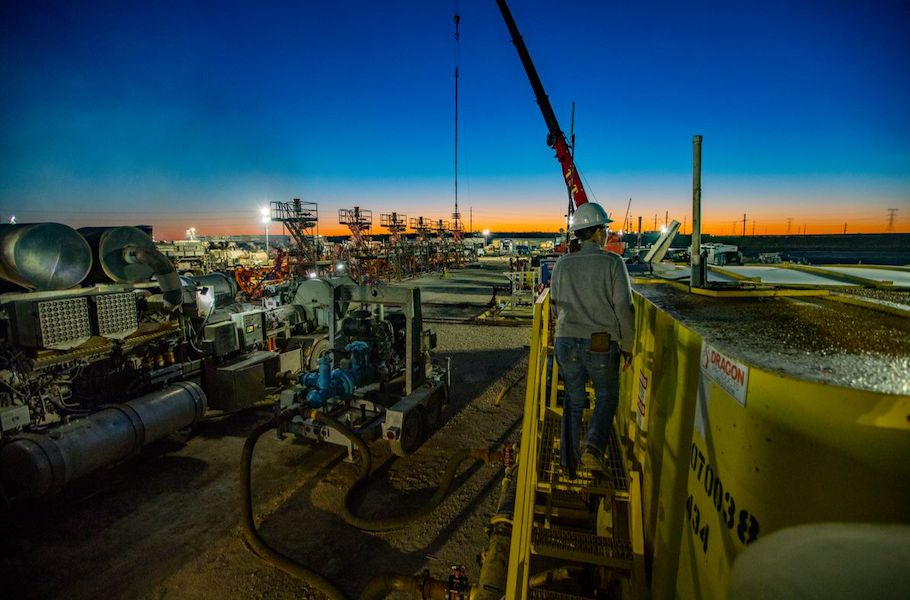
Hart Energy: What types of synergies has your company adopted in M&A?
Torres: We expect to realize around $525 million combined annual synergy from the acquisition of Parsley and Double Point—$275 million of that is from G&A and interest savings and the remaining $250 million is from operational synergies of both of which are capital and LOE [lease operating expense]. So some of the synergies that we’re already leveraging is our economies of scale to benefit our supply chain, our increased completion efficiencies through the use of simul-frac, blocking up acreage for wider implementation of extended-lateral length up to about 15,000 feet, and lastly, connecting our water infrastructure and shared production facilities.
Downey: We’ve recognized synergies by integrating teams and collocating them like moving former WPX employees to Oklahoma City. As our activity levels were not reduced due to the merger, we felt that it was important to pull the teams together and focus on best practices moving forward.
The companies complemented each other well, and we’ve seen synergies with the integration of our technologies and platforms. And I mentioned before that we’re seeing a lot of synergies in operations, especially in the Delaware Basin where we’re really focused on growth.
Gustavson: We’re very happy with how the Noble Energy acquisition turned out, having now two quarters where we’ve been integrated, seeing everything we said—the free cash flow accretion, the returns accretion, earnings accretion. The synergies have exceeded initial expectations with savings in operating expenses, exploration, debt and third-party expenses. We’re very pleased with the talent we’ve gained from the Noble employees that joined our team, and we’re all learning from each other. We will use the best practices from both companies and continue to leverage our advantaged dataset built from our NOJV [nonoperated joint venture] work. Bringing in the Noble Midstream assets has also brought tremendous value on the experience and asset side as well, with full integration well underway.
Hart Energy: How do you balance generating cash flow with growing production?
Torres: Pioneer remains committed to our investment framework, which returns substantial cash to our shareholders and variable dividend with longterm oil growth of approximately 5% annually. And any excess cash generated as a result of higher oil prices will directly benefit our shareholders via our variable dividends as it’s outlined by our investment framework.
Gustavson: Production is ultimately an outcome. We’re starting in a strong position, and the flexible nature of these assets allows us to manage it with our shareholder’s best interest in mind. We did achieve positive free cash flow last year in a much lower price market and expect to generate over $3 billion in free cash flow by 2025.
RELATED CONTENT:
Aug. 2, 2021 Hydraulic Fracturing Pressure Pumping Roundtable: Powering Through
July 29, 2021 Cold Bore Technology Closes $14 Million Financing
July 28, 2021 Halliburton Launches Low Cost, Direct Fracture Monitoring Service
July 28, 2021 ProPetro Promotes Sam Sledge to CEO in Leadership Transition
JUly 12, 2021 Seneca Resources, NexTier to Develop Comprehensive Emissions Testing for Well Completions Work
July 7, 2021 Liberty Completes digiFrac Electric Frac Pump Field Test in Permian Basin
July 6, 2021 Reveal Energy Inks Deal to Commercialize Hydraulic Fracture Pressure Diagnostics
June 21, 2021 Specialized Chemistry Increases Sustainability of Traditional Hydraulic Fracturing
Recommended Reading
EQT CEO: Biden's LNG Pause Mirrors Midstream ‘Playbook’ of Delay, Doubt
2024-02-06 - At a Congressional hearing, EQT CEO Toby Rice blasted the Biden administration and said the same tactics used to stifle pipeline construction—by introducing delays and uncertainty—appear to be behind President Joe Biden’s pause on LNG terminal permitting.
Energy Transfer Asks FERC to Weigh in on Williams Gas Project
2024-04-08 - Energy Transfer's filing continues the dispute over Williams’ development of the Louisiana Energy Gateway.
Equitrans Delays WV-VA Mountain Valley Natgas Pipe Again, Boosts Cost
2024-02-20 - U.S. energy firm Equitrans Midstream delayed the estimated completion of its Mountain Valley natural gas pipeline from West Virginia to Virginia to the second quarter from the first quarter due in part to adverse weather in January.
Early Startup of Trans Mountain Pipeline Expansion Surprises Analysts
2024-04-04 - Analysts had expected the Trans Mountain Pipeline expansion to commence operations in June but the company said the system will begin shipping crude on May 1.
TC Energy’s Keystone Back Online After Temporary Service Halt
2024-03-10 - As Canada’s pipeline network runs full, producers are anxious for the Trans Mountain Expansion to come online.


